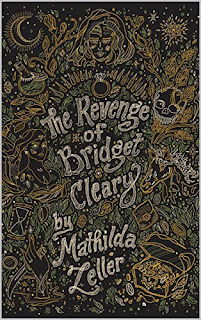Virginia Crow's Blog: Crowvus Book Blog, page 21
March 30, 2023
#HistFicThursdays - Animals in my Historical Fiction
The second novel I ever finished - and still is nowhere near publishing standard! - was about two dragoons in the Crimean War. It fits in with my Family Saga through a certain Colonel Josiah Tenterchilt, but the plot really focuses on the two younger officers. It became apparent as I wrote it, that the relationship between these cavalrymen and their horses were as significant as any they shared with other people. A little research soon revealed that it was Drummer Boy, an equine part of the fateful Charge of the Light Brigade (ridden by Lt Col de Salis of the 8th Hussars), who was the first animal in the British Army to receive a war medal. How strange that it took until 1854 for these service animals to be fully recognised. Of the 700 horses involved, less than 200 returned. But this provided me with all the inspiration I needed to explore the love and appreciation between cavalrymen and their steeds, and so I began to explore the fascinating bond between man and beast.
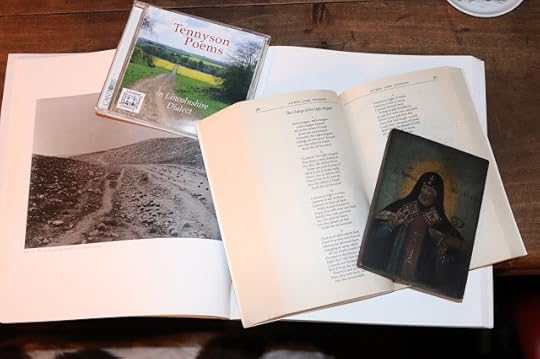 “What is the temperament of this horse?”
“What is the temperament of this horse?”“Albert has trained him to commands,” Montgomery replied. “He follows orders like a dog.”
“Or a soldier,” Colonel Tenterchilt added, a twinkle of merriment appearing in his eye. “He sounds to be quite a horseman, your friend.”
Montgomery began riding up the road towards the edge of the city, Black Thunder pleased to be leaving the confines of the ruins behind. “He is the finest horseman I have ever met, sir. He is in the army for that reason alone.”
“Then both of you are as misplaced as one another.”
“What do you mean, sir?”
“These ranks are full of men who are fleeing from a life or running toward another. That is no way to fight an enemy.” The colonel looked across at Montgomery who met his gaze sternly. “Men should join the army to defend what they love, not to leave what they hate.”
From that moment on, I decided that all my books would have animals in them, and this blog is an introduction to some of them...
The Animals of the Tenterchilt Family
During the course of six books over the best part of 100 years, there are several animals who brush shoulders with the family. The very first one appears in the first instalment, Beneath Black Clouds and White. Little Gulliver arrived in the book with all the love and trauma of when we got Orlando. It was easy to write a spaniel puppy, because my own was still fresh in my memory. And, when I was writing Blind Folly of the Heart (which is set 20 years later) it was time to give the next generation a spaniel pup of their own, so Genevieve came along.
Gulliver had an extra role to simply being a token animal. The way in which a person relates to an animal says a great deal about them, and visa versa. So poor Mrs Tenterchilt, who is on the verge of despairing where her youngest daughter's behaviour is concerned, has finally found Catherine a companion.
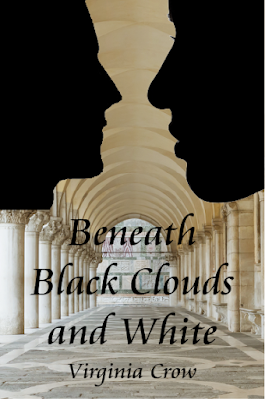 “You must excuse Gulliver,” Mrs Tenterchilt said softly as she stepped along the corridor. “He is so used to having the whole house to run in. But he is not normally so calm around strangers. Do you keep dogs in Derbyshire, Lieutenant?”
“You must excuse Gulliver,” Mrs Tenterchilt said softly as she stepped along the corridor. “He is so used to having the whole house to run in. But he is not normally so calm around strangers. Do you keep dogs in Derbyshire, Lieutenant?”“My uncle does. But they stay in the kennels.”
“I think the children and I are the only ones who are pleased to have Gulliver in the house. The major wanted him in a kennel, but he is the only thing that calms Catherine, our youngest daughter.”
Catherine later goes on to have her own horse, steal her sister's, and even gets a pet monkey called Columbus. All this while her husband's only appreciation of animals stretches as far as recruiting mousers. Still, opposites attract!
There is an assumption that everyone rode in the early nineteenth century. This isn't true. A good many people walked places, and even those who could ride would still walk too. But, if you were travelling long distances from town to town, horses were still the main mode of transport - either being ridden or, more usually, attached to a cart, coach, or carriage. Later, as I mentioned at the start of the blog, horses would become companions to the point of friendship for the cavalrymen of the family.
The Animals of Caledon
Looking at the animals, both domestic and wild, of northern Scotland in the mid-seventeenth century is like researching an entirely lost existence. No matter how much we try to recapture life in that time and place, the natural history of the Highlands has been changed beyond measure, culminating with the horrendous Year of the Sheep. But, in books, we can head back to those times, when the kye were brought out each day, and hill sheep were not even a consideration. A shepherd was responsible for a flock, and their neglect could be fatal.
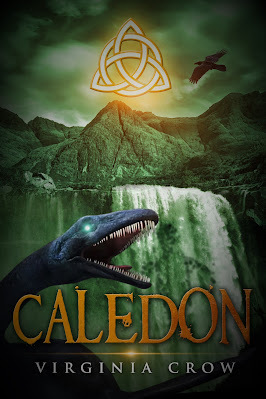 “Look what they did,” Mary said angrily. Donnie realised, even within his dream, that he had seen this conversation before. It had been many years ago, when Mary had been only ten, but in his dream she stood before him as radiant and beautiful as he had seen her only three months ago.
“What who did?” he whispered.
“Those crows.”
Donald looked into her arms and felt disgusted as he saw a lamb with blood spilling down its face from where the crows had taken its eyes. It bleated and wriggled in his sister’s arms and she sat down on the floor with it. Kneeling down, Donnie stroked its soft woolly coat.
“They are monsters,” Mary continued.
“Why do they do it?”
“They single out the weakest and gentlest. Then they blind them so they can’t find the rest of the flock.”
“Won’t the flock come looking for them?”
“Not after this. They know the lamb will die.” She looked up and met her brother’s gaze. “Once the crows have started their business, no one is interested in saving them. And the crows will stop at nothing to fill their stomachs.”
Donnie recalled with a sickening remembrance what the outcome had been for the young lamb so many years ago, for he and his sister had been unable to save it and the crows had returned some days later. He rose to his feet and lifted his hand to his black hair as he felt something heavy fall on his head. He gave a cry as his fingers closed on the silky feathers of a bird, and he realised with a horrible sickening feeling that it was a crow.
“Look what they did,” Mary said angrily. Donnie realised, even within his dream, that he had seen this conversation before. It had been many years ago, when Mary had been only ten, but in his dream she stood before him as radiant and beautiful as he had seen her only three months ago.
“What who did?” he whispered.
“Those crows.”
Donald looked into her arms and felt disgusted as he saw a lamb with blood spilling down its face from where the crows had taken its eyes. It bleated and wriggled in his sister’s arms and she sat down on the floor with it. Kneeling down, Donnie stroked its soft woolly coat.
“They are monsters,” Mary continued.
“Why do they do it?”
“They single out the weakest and gentlest. Then they blind them so they can’t find the rest of the flock.”
“Won’t the flock come looking for them?”
“Not after this. They know the lamb will die.” She looked up and met her brother’s gaze. “Once the crows have started their business, no one is interested in saving them. And the crows will stop at nothing to fill their stomachs.”
Donnie recalled with a sickening remembrance what the outcome had been for the young lamb so many years ago, for he and his sister had been unable to save it and the crows had returned some days later. He rose to his feet and lifted his hand to his black hair as he felt something heavy fall on his head. He gave a cry as his fingers closed on the silky feathers of a bird, and he realised with a horrible sickening feeling that it was a crow.
Of course, in the realms of Historical Fantasy, this dream means so much more!
And Caledon does not only feature the domestic animals of that day and age. It also includes the Eile: six creatures of a less tangible existence. In each one is reflected a certain trait, one which is embodied as much in the animal as in the person. The Eile are:
Nobility - StagPower - Sea SerpentStealth - Pine MartenStrength - WolfWisdom - RavenZeal - WildcatHere's a little video which details them all:
There are links here to aspects of mythology, of course, and it is no coincidence that a great number of Scottish legends are linked to animals. Look at kelpies, or selkies, or - of course - the loch ness monster! The Raven Banner had the ability to give victory at the expense of the standard bearer's life, an important analogy to the use of wisdom, which the raven represents in Caledon. And then there's the famous image of the Monarch of the Glen - no finer example of nobility!
The Animals of The Year We Lived
And talking about mythology...!
There are two significant animals in The Year We Lived. One of these is the robin, an emblem of love and life. Bird lore was a significant part of Saxon culture. Many of the chronicles make reference to birds and the omens or meanings they might carry. But the robin, native to Normandy too, has so much mythology linked to it that it was too good an opportunity to pass up on.
At the time, the ability to tame birds was linked to the superstitions that a person was communicating with them, and this gave rise to the exploration into the roles of both Dunstan (the Changeling) and Alan (the Fool). The reader is welcome to decide how much communication they actually share and how much is for show or through a willingness to believe.
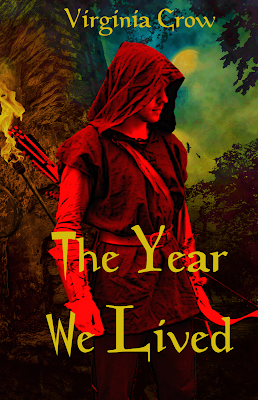 “It is a robin,” Alan said, watching as she scanned the surroundings to try and find it. “They are fearsome birds, always seeking fights to protect their own.”
“They are beautiful,” Edith whispered. “They don’t fear the snow, for they have fire in their chests.”
Alan lowered the bucket back into the well and took the pitcher from her hands, guiding her back up to the doors of the Hall once more. “They’re red all over, but wear a masked cowl and cloak to disguise them from unwanted eyes.”
“And so may pass where they want to,” she sighed.
“It is a robin,” Alan said, watching as she scanned the surroundings to try and find it. “They are fearsome birds, always seeking fights to protect their own.”
“They are beautiful,” Edith whispered. “They don’t fear the snow, for they have fire in their chests.”
Alan lowered the bucket back into the well and took the pitcher from her hands, guiding her back up to the doors of the Hall once more. “They’re red all over, but wear a masked cowl and cloak to disguise them from unwanted eyes.”
“And so may pass where they want to,” she sighed.
Other stories are told about the robin during the course of the book, and the feisty bird continues to be a link between Edith and Dunstan as they remain geographically parted.
The other animal who makes a significant contribution to the story is the White Hart. Every so often, nature throws this creature into the mix. It is not the same as an albino, as it is not void of all pigmentation, but has a different colour hide. Traditionally, this beast - like all deer in Norman times - could only be hunted by the king or those invited to join him.
In pre-conquest Britain, the White Hart could mean different things. Celtic cultures had it as a warning against an impending transgression, while in Arthurian legends it was a symbol of questing and spiritual journeying. Pagan beliefs linked it to Herne the Hunter, while Christianity entwined it with Saint Hubertus: Patron Saint of Hunters. The Year We Lived pieces all of these together to create the white hart into an adventure of its own.
He never took his eyes from the deer, but it faded into the mist, its glow subsiding. Dunstan stared so hard after it, his eyes seemed to see every drop of moisture in the fog. Gradually, the specks merged together and bound into a man. It was the man he had followed, and he felt afraid for a moment as the figure strode out of the mist. He towered over where the changeling lay on the ground. His hand carried the biggest bow Dunstan had ever seen and his shoulders were weighed down by warm skins. Hoping this stranger would pass him by unnoticed, Dunstan crawled away, but stopped as the figure knelt beside him. “You saw the stag?” He turned back to look into the newcomer’s face and gasped as he recognised the features. “Robert?” “Dunstan?” the other man said, quickly pulling the skin coat from his shoulders and wrapping it around his trembling companion. “What are you doing?” “Following you. And yes, I did see it.” “I had a mind to kill it tonight,” Robert whispered, shame seeping into his voice. “It wants you to find it. But not for that. Not everyone sees it, you know? It’s not wholly of this world. It will guide us.”There are other animals in the book, too. Hunting hounds, horses, and hawks, as well as all the creatures which Dunstan gathers to him! But the robin and the white hart are examples of the full depth of Saxon and Norman mythology.
And then...
It's not only my historical writing which draws on the importance of animals. How we connect with animals, on both a spiritual superstitious level as well as in a caring affection, defines us as individuals. Whether it's a love of nature or a pet (a bird, a mammal, a fish... the list goes on), interaction with different species helps to develop characters. And characters - just like real people - often learn as much about themselves through these relationships as they do from their relationships with other humans.
After all, most children have a favourite animal before they have a favourite anything else!
March 27, 2023
#TheRabbitHoleReadingChallenge Book Review: Alternate Endings
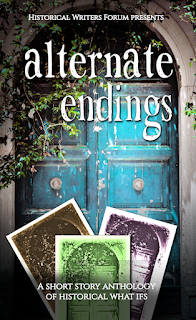

Review
My experience of short stories is more in writing them than in reading them, although some I have read and enjoyed have stayed with me for a long time. In almost every instance, I have read a book of short stories by a specific author (Neil Gaiman's excellent offerings on this spring to mind) and, in that case, it is more akin to reading a novel.
By contrast, this is a book which brings together eight different authors, who provide their own unique perspectives and areas of expertise. The first thing I noticed about them as a list is that they are mostly female, with only one male author included. This is reflected in many of the stories, which take a very female perspective.
The concept of alternate history is one I can definitely buy into. As an author, I very nearly indulged in it myself when I was writing a historical novel and the actual history was just too sad. We all engage in alternate history on a nearly-daily basis too, thinking about the paths not taken and wondering where they might have led us.
Each of these authors has found their own little niche - their own question to ask, where a different answer would have changed the world, although in some cases - even with the change in history - the world they created seems to have found its way back to "normal".
I have a natural bias towards the first story (Vercingetorix's Virgin) in the book, written by my sister and fellow Crowvus-ite, Virginia Crow. It isn't a time period which grabs my attention particularly, but I loved the way that the women in the story develop and grow throughout.
Another favourite was Elizabeth K. Corbett's Marie Thérèse Remembers. Strong women again, you see? And I left it wanting to know more about what actually happened, because it convinced me that I could have been reading narrative non-fiction rather than an imaginative story.
Between these two bookends are a range of different ideas, some of which worked better than others - for me, at any rate. I have a personal interest in the Tudor period, and found those stories interesting and engaging. The two set during the American War of Independence (or Revolution - what do we call it?!) didn't manage to pique my imagination so well. Perhaps just a result of not knowing the history so well. The two medieval stories have a lot to offer, but I was sorry to see Empress Matilda taken out of her own story in a book which otherwise dwells on strong women through history.
For my own part, I found moving between the different authors' styles and voices to be slightly challenging, but that would be the case with any anthology.
I have no doubt that there is something in this book for everyone, and I would recommend it for anyone who enjoys historical fiction. What is abundantly clear is that each of these authors knows their own time period very well: that's the only way that they can create alternate history which is believable. And they never fail to challenge you - the reader - to ask the same What If? questions of history.
Blurb
We all know the past is the past, but what if you could change history?
We asked eight historical authors to set aside the facts and rewrite the history they love. The results couldn’t be more tantalizing.What if Julius Caesar never conquered Gaul?What if Arthur Tudor lived and his little brother never became King Henry VIII?What if Abigail Adams persuaded the Continental Congress in 1776 to give women the right to vote and to own property?Dive in to our collection of eight short stories as we explore the alternate endings of events set in ancient Rome, Britain, the United States, and France.
An anthology of the Historical Writers Forum.
Social Media
Facebook: https://www.facebook.com/groups/write... @HistWriters
March 23, 2023
#HistFicThursdays - Sigurd Eysteinsson (Have We Ever Been Alone?) - The Legacy of a Cheat
This week, I'm delving a long way back in history to introduce you to March's historical figure...
A week ago I launched a collection of short stories called Have We Ever Been Alone? (You can find it here) Each one of these stories includes a meeting between mankind and another sentient form. The opening story is based on the bizarre death of Sigurd Eysteinsson, and he's the subject of today's blog post.
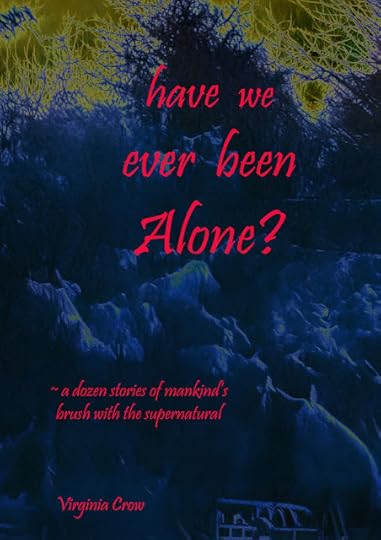
There is some dispute over whether Sigurd was the first or second Earl of Orkney, but the impact he left upon the islands was certainly immense. He was the man accredited with bringing Christianity to Orkney, although this was almost certainly only Sigurd paying lip-service in order to protect his earldom. When Olaf Trygvesson confronted him, his choice was a clear one: convert or have your whole lands and people destroyed.
Despite the fact Sigurd accepted these rather brutal terms, Olaf took his son hostage to ensure the earl's continued support. Sigurd's son died not long after, and Sigurd was at liberty to freely follow the old religion once more.
There is no evidence that Sigurd had a daughter, although she is the main character in the opening story of Have We Ever Been Alone? and befriends a Pictish seer, who has foreseen her father's death. But excusing her presupposed existence, Sigurd's portrayal is true to life. He was a born campaigner, the stuff of legends! But he was also a cheat - a fact which was going to cost him his life.
Aside from the conversion and campaigning in which he partook, Sigurd Eysteinsson (who was also called Sigurd the Mighty) is most famous for his death. Having fought several times against Máel Brigte, the Pictish lord of Moray, Sigurd proposed a 40-man-a-side battle to resolve their continued disagreements. Máel Brigte accepted but, unbeknownst to the pict, Sigurd brought twice as many men. Unsurprisingly, Sigurd was victorious, and the battle seemed to have been won. Without a second thought, Sigurd claimed his trophy: Máel Brigte's head.
Then, fate stepped in. His horse, anxious about crossing the river, shied. This sudden and unpredictable move caused Máel Brigte's severed head to bite down on Sigurd's leg. Apart from feeling angry, and no doubt embarrassed too, about this, Sigurd probably thought nothing of it. However, the wound became infected and, without medical care, poisoned Sigurd.
It was poetic justice, really, that Sigurd cheated to win the battle, only to finally lose his life to a freak accident.
Despite this trickery, it has to be said that Sigurd was known to have governed Orkney with real wisdom. He knew how to make the best of any situation and always loyally defended his people - by whatever means.
And he left an immortal legacy to Orkney. The Ba' game which take place at Christmas and New Year, has it's roots in Sigurd's unfortunate demise. The ba', representing Máel Brigte's head, is fought over and thrown toward one end of Kirkwall or the other and, while it is an overwhelming event, thankfully even that isn't as brutal as its legendary ancestry!
March 15, 2023
#HistFicThursdays - Run with the Hare, Hunt with the Hound - Paul Duffy - Book Excerpt
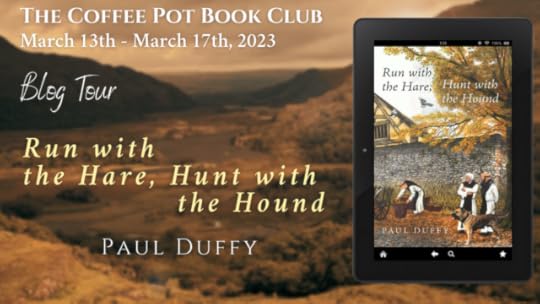
This week for #HistFicThursdays, I'm delighted to once again be teaming up with The Coffee Pot Book Club for author Paul Duffy's blog tour! Today, I'm sharing an excerpt from his book Run with the Hare, Hunt with the Hound...
First of all, let's meet the book...
On a remote Gaelic farmstead in medieval Ireland, word reaches Alberic of conquering Norman knights arriving from England. Oppressed by the social order that enslaved his Norman father, he yearns for the reckoning he believes the invaders will bring—but his world is about to burn. Captured by the Norman knight Hugo de Lacy and installed at Dublin Castle as a translator, Alberic’s confused loyalties are tested at every turn. When de Lacy marches inland, Alberic is set on a collision course with his former masters amidst rumours of a great Gaelic army rising in the west. Can Alberic navigate safely through revenge, lust and betrayal to find his place amidst the birth of a kingdom in a land of war?
You can buy Run with the Hare, Hunt with the Hound via this Universal Link
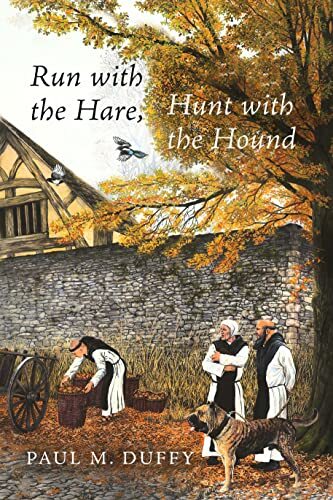
And here's an excerpt to whet your appetite:
Táin
We moved before sunrise, silently and swiftly breaking camp. We pushed on beneath uncertain moonlight, the bóthar widening out to a more substantial roadway – becoming a slíghe. The lightly armed scouts they call kern padded the hills on each side calling down softly at times. I rode behind Donchad at the head and at some invisible sign or landmark, he held up his hand stopping the host and led us off the slíghe and into the tree line. I could not imagine what he could read in the darkened surroundings that prompted him to move with such confidence. I began to feel fear. What if he had missed his path. What if he had sold the party over to ambush for the grant of a ráth and a woman somewhere in these hills. The darkness began to take shape around us. Donchad’s broad back ahead of me. Shadows in my eyes. Shades coming across the greyness. We pushed through branches which trailed us like the fleshless fingers of crones. We came to a wide, untended ditch, and crossed over where the bank had collapsed into the bottom, green grown with bramble and nettle. Kern ranged out making sure none guarded the border of the tuath. Through the thinning trees, a blue grey sky appeared and as we approached the eaves of the wood, we saw a sloping meadow running down to a stream and beyond, emerging from the mist, the ráth of Áed Buidhe.
The Tiarna rode up and Donchad dismounted. Shielding themselves behind a large stump they spoke in low tones pointing down over the scene below, toward the outer stockade around the ráth. This was where the herd could be seen, shifting and lowing, brought in for the night against the depredations of wolves or raiders. My eyes strayed back to the stump to find the Tiarna and Donchad both looking towards me. The Tiarna called me over with a motion of his hand. I slid from the warm back of the horse, handing its tether to the man beside me, and approached. The Tiarna sat back into the bole of the tree where the heartwood had been eaten away by louse and fungus and he took both of my hands in his. He spoke softly, his voice full of assurance.
‘Now young kelt-bringer,’ he said smiling, ‘I have another thing to ask of you and this to one who has challenged the sídhe in their own house, will be a thing of no consequence.’
‘We need you to open the gate,’ Donchad said, bringing me around to the edge of the stump and pointing to the wooden doors set between thick posts with a watchhouse rising above - a dark square space beneath its awning of thatch, impenetrable in the pre-dawn. He pressed something into my hand and looking down I saw it was a long-bladed knife, the length of a forearm, the type they call the scian mór. ‘Go now, do not think on it. Move before the light strips the shadows from the valley. Run low and straight, and do not fear. If the alarm is raised, run to the river. We will be thick around you before the household can drag their fat bellies from their beds.’
He laid his large hands on my shoulders and guided me out into the open and, before I could protest, he pushed me gently forward. The hillside took me then, momentum dragging me forward until I was running, clear of the trees, through the meadow grass and onwards towards the tóchar. I ran faster, and faster still until I was running simply to keep upright, the stream approaching fast. The pounding of my feet, the pounding of my heart echoing like an army of tree fellers in a valley and I watched the blackness beneath the awning of the guard turret, watched for movement, for a shout, for an arm rising to strike a bell.
As the slope bottomed out, I missed a step and fell, tumbling violently. I lay still for a moment, amid the stalks of meadowgrass, brushed with their moisture, smelling their greenness and listening. A waking dove cooed in the trees, the imperative sound carrying far. No hint of movement in the treeline, though I knew they all watched, too tense to speak. I crawled forward, staying low, and reaching the stream, I slid down the side of the bank and moved upstream towards the tóchar, the water fast and lively beneath me, masking the sound of my passing. Beneath the tóchar, I climbed across the underside, grabbing the beam with my hands and hooking my ankles over. I dropped into the moss and leaf litter on the far side and pushed up the bank on my front, and peered through sparse branches of a blackthorn.
The palisade stood not fifty paces from me; its circuit built of roughly split beams set into the earth of a bank raised up over a ditch. I studied, in the waxing light, the set of each beam on the stretch closest to me. I looked for the uneven line of one against the other that might afford a handhold in their imperfect join. A cock crowed from within and this spurred me onwards. I stood out from the bush, hunched over, ready to run for the palisade. And to my left, not four paces away, a girl stood. A woman. Lithe, pale, beautiful beyond propriety. I had not seen her, shaded by the rail of the tóchar and at once, I realised that the dove cooing with strange insistence had been Donchad from the trees, warning me of the danger.
She did not move, standing tall with her garment hanging, brushing the ground. Her bare feet planted in the grass. Her hair, the blue-black of a raven in sunlight and a basket on her hip. She did not move, and I raised my hand slowly, as if to a skittish colt.
‘Ail a n-uír,’ she said with an unnerving clam – a stone from the earth. Her words unmasking me. Her curling lip and dark eyes stripping me. I shrank back into the thorn bush, feeling naked and exposed. The blackness beneath the awning of the guard tower glared from over her shoulder, sharing her distain.
‘Please,’ I said bringing my hand to my mouth, gesturing silence.
Her eyes scanned the valley then, probing the margins, looking for more like me. Considering whether to raise her voice. My life in the balance. And then she took a step forward, onto the board of the tóchar. And as she went, she spoke over her shoulder in a low voice, as if recounting something of little consequence.
‘The gate is unbarred. The spears sleeping.’ She walked on, and I watched her crossing the stream and turning to follow its margins looking through the growing shrubs, sorting their lolling heads as a kennel master sorts the hounds.
To trust her word and run to the gate? Into a javelin hurled at my breast? The cock crowing once again, the rooks in the trees beyond waking, the crake of their voices tearing the soft fabric of the moment. Lifting Lasair’s embroidered strip from its place beneath my belt, I put it to my lips, invoking her protection.
I looked back to the darkened treeline, beckoning Donchad forwards with my arms and ran on, hunched low, towards the gate and whatever might come. No shouts rose up, no javelins rained down and I pressed myself flat to the heavy oak doors, invisible from the tower above. I put my shoulder against one to find that the bar had indeed been raised. I eased the gate inwards, taking the scian from its sheath, slipping into the space between. The yard was open, a broad space with few buildings. A second gate beyond, it too with a watch tower, I slammed myself back into the palisade out of view. Hens scratched around in the dusty light and behind a rough stockade of lengths of roundwood, the herd jostled and steamed in the morning chill.
Now, let's meet the author:
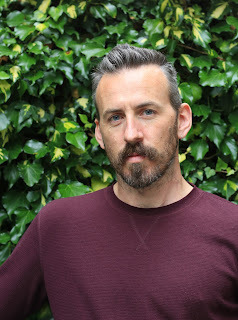 Paul Duffy, author of Run with the Hare, Hunt with the Hound (2022), is one of Ireland’s leading field archaeologists and has directed numerous landmark excavations in Dublin as well as leading projects in Australia, France and the United Kingdom.
Paul Duffy, author of Run with the Hare, Hunt with the Hound (2022), is one of Ireland’s leading field archaeologists and has directed numerous landmark excavations in Dublin as well as leading projects in Australia, France and the United Kingdom.He has published and lectured widely on this work, and his books include From Carrickfergus to Carcassonne—the Epic Deeds of Hugh de Lacy during the Cathar Crusade (2018) and Ireland and the Crusades (2021). He has given many talks and interviews on national and international television and radio (RTÉ, BBC, NPR, EuroNews).
Paul has also published several works of short fiction (Irish Times, Causeway/Cathsair, Outburst, Birkbeck Writer’s Hub) and in 2015 won the Over the Edge New Writer of the Year Award. He has been shortlisted for numerous Irish and international writing prizes and was awarded a writing bursary in 2017–2018 by Words Ireland.
You can find Paul on these links:Website - Twitter - Facebook - LinkedIn - Goodreads
To follow the rest of the Run with the Hare, Hunt with the Hound tour, click on the banner below:
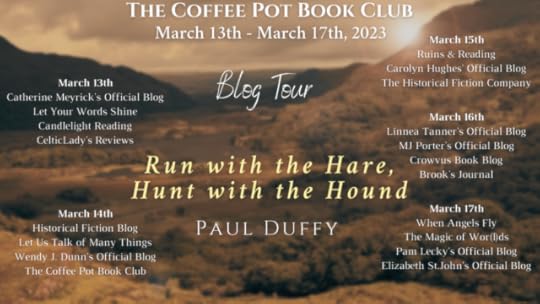
March 8, 2023
#HistFicThursdays - The Whispering Women (The Delafield & Malloy Investigations) - Trish MacEnulty - Guest Post
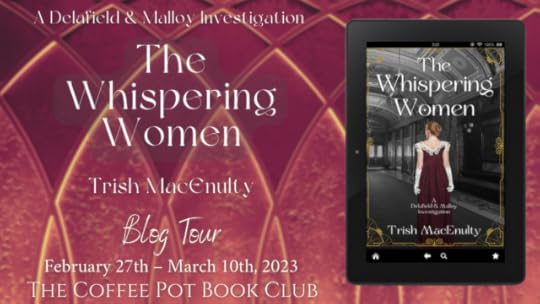
Happy #HistFicThursdays! This week, I'm delighted to be welcoming Trish MacEnulty as part of her Coffee Pot Book Club tour for The Whispering Women. Find out about how she researched for the writing of this book, and who she would have starring in a cameo role, in the guest post below! But first - let's meet the book...
Blurb
“Richly drawn characters, the vibrant historical setting, and a suspenseful mystery create a strong current that pulls readers into this delightful novel. But it's the women's issues—as relevant today as they were in the early 1900s—that will linger long after the last page."-- Donna S. Meredith, The Southern Literary Review
Can two women get the lowdown on high society?
“Two powerless young women must navigate a soul-crushing class system and find the levers of power they wield when they combine their strengths. These women may have been taught to whisper, but when their time comes, they will roar.”– 5 Star Amazon Review
Louisa Delafield and Ellen Malloy didn’t ask to be thrown together to bring the truth to light. But after Ellen witnesses the death of a fellow servant during an illegal abortion, Louisa, a society columnist, vows to help her find the truth and turn her journalistic talent to a greater purpose.
Together, these unlikely allies battle to get the truth out, and to avenge the wrongful death of a friend.
What will our heroes do when their closest allies and those they trust turn out to be the very forces working to keep their story in the dark? They’ll face an abortionist, a sex trafficking ring, and a corrupt system determined to keep the truth at bay.
“If you like historical fiction and if you like mysteries, this one is for you!”– 5 Star Amazon Review
Was change possible in 1913?
To find out, read THE WHISPERING WOMEN today!
The Whispering Women is available via this Universal Link
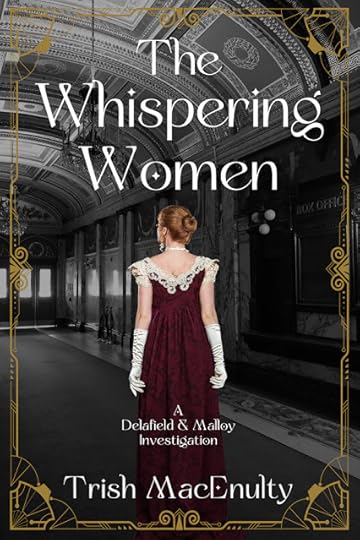
Guest Post
Thanks to Virginia and the team at Crowvus for the chance to talk about my series, Delafield & Malloy Investigations!
I rely on research to build my stories, and I try to make sure every detail is accurate. For example, in Secrets and Spies, my main character, Louisa Delafield, takes her new assistant out to lunch. I had to consider, where would two young women (both of whom were born to wealth but no longer had wealth themselves) go to eat lunch, especially if they had an expense account? I chose the Waldorf-Astoria, and in my research discovered that the maitre d’ for the Waldorf-Astoria was a Swiss immigrant named Oscar Tschirky, who was famous for, among other things, his “Waldorf Salad”! Well, my book isn’t about Oscar or his salad, but I had to at least mention his name.
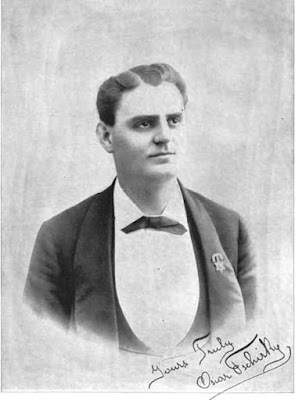 Oscar Tschirky
Oscar Tschirky(Wikicommons)
In my head there’s an imaginary reader who knows all the facts in the world and will double check my references to make sure I’m being accurate. This is not to say that I don’t cheat. Oscar probably didn’t do lunches, but I decided to have him on duty that day because surely he was there at lunch once in a while.
Some information isn’t easy to find. For example, in The Whispering Women, I have Louisa leaving the Grand Central Terminal grand opening around two in the morning. Louisa was having financial difficulties at the time so she couldn’t afford a taxi, but could she have taken the I.R.T. (Interborough Rapid Transit)? After all, it was only a nickel.
For the life of me I couldn’t find out if the subways ran all night in 1913. So the next time I went to New York on a research trip, I visited the New York Transportation Museum — which I loved, by the way!! There I met a wonderful woman named Kate who worked for the museum and who found the information for me. Yes, the subways did run all night. Of course, they hadn’t yet built the subway lines to Grand Central Station so my character would have taken a different line. Then Kate read a draft of my book for me and gave me tips about the various subway and elevated trains that my characters might have taken.
 The Transportation Museum
The Transportation Museum
Some research just must be done in person! In The Burning Bride, Louisa goes to St. Augustine, Florida, to cover a wedding and also to get out of New York, where someone seems intent on killing her. Well, you can’t go to St. Augustine and not encounter an alligator. So I took a quick trip to the Alligator Farm, a place I had love to visit as a child. But they also have an amazing sanctuary and since a roseate spoonbill turns out to be a significant symbol for Louisa, I was thrilled to get a picture of one perched and posing in a tree.
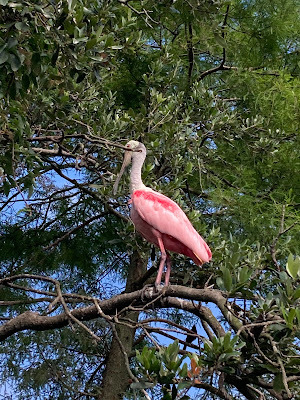 Roseate spoonbill from The Alligator Farm
Roseate spoonbill from The Alligator Farm
An optional question that the Crowvus team offered for my guest blog was this: If I had a cameo in my books, who would I be and why? Since I am both Louisa and Ellen, I decided to change the question a bit: Who from my present life makes a cameo appearance in the series? That would be my cat Tumbleweed, who is the ginger cat living with Louisa and her mom and who grows quite fond of Carlotta, the young prostitute who comes to live with Louisa at the end of Secrets and Spies.
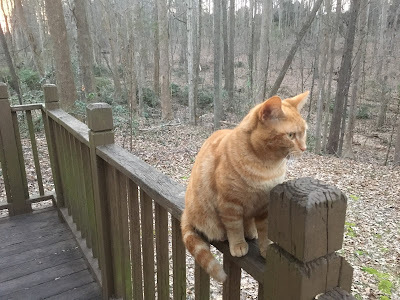 Tumbleweed
TumbleweedNow, let's meet the author:
 Trish MacEnulty is a bestselling novelist. In addition to her historical fiction, she has published novels, a short story collection, and a memoir. A former Professor of English, she currently lives in Florida with her husband, two dogs, and one cat. She writes book reviews and feature articles for the Historical Novel Review. She loves reading, writing, walking with her dogs, streaming historical series, cooking, and dancing.
Trish MacEnulty is a bestselling novelist. In addition to her historical fiction, she has published novels, a short story collection, and a memoir. A former Professor of English, she currently lives in Florida with her husband, two dogs, and one cat. She writes book reviews and feature articles for the Historical Novel Review. She loves reading, writing, walking with her dogs, streaming historical series, cooking, and dancing. You can follow Trish MacEnulty on these links:Website - Twitter - Facebook - Instagram - BookBub - Amazon Author Page - Goodreads
Keep up with the rest of the The Whispering Women tour stops by clicking on the banner below:
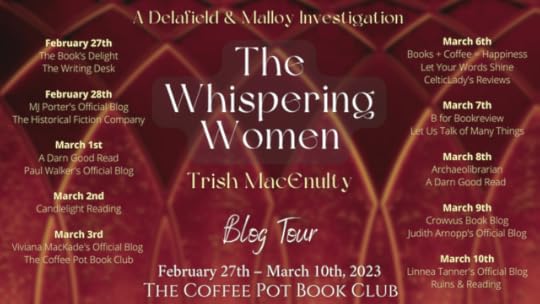
March 1, 2023
#HistFicThursdays - A Mistake of Murder - Helen Hollick

This week for #HistFicThursdays, I'm delighted to be teaming up with The Coffee Pot Book Club to introduce you to Helen Hollick's fabulous book, A Mistake of Murder!
So, let's meet the book...
The third Jan Christopher Cosy Mystery
Was murder deliberate - or a tragic mistake?
January 1972. The Christmas and New Year holiday is over and it is time to go back to work. Newly engaged to Detective Sergeant Laurence Walker, library assistant Jan Christopher is eager to show everyone her diamond ring, and goes off on her scheduled round to deliver library books to the housebound – some of whom she likes; some, she doesn’t.
She encounters a cat in a cupboard, drinks several cups of tea... and loses her ring.
When two murders are committed, can Jan help her policeman uncle, DCI Toby Christopher and her fiancé, Laurie, discover whether murder was a deliberate deed – or a tragic mistake?
You can buy A Mistake of Murder via this Universal Link!
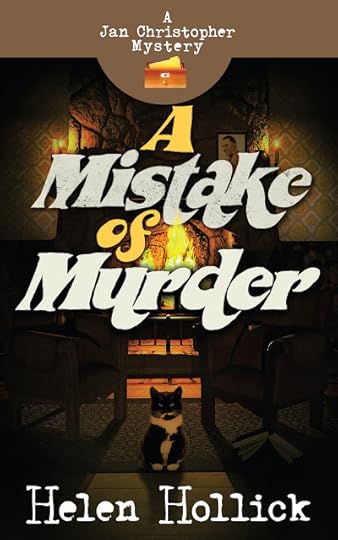
Now, let's meet the author:
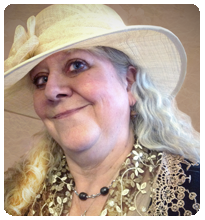 First accepted for traditional publication in 1993, Helen became a USA Today Bestseller with her historical novel, The Forever Queen (titled A Hollow Crown in the UK) with the sequel, Harold the King (US: I Am The Chosen King) being novels that explore the events that led to the Battle of Hastings in 1066.
First accepted for traditional publication in 1993, Helen became a USA Today Bestseller with her historical novel, The Forever Queen (titled A Hollow Crown in the UK) with the sequel, Harold the King (US: I Am The Chosen King) being novels that explore the events that led to the Battle of Hastings in 1066. Her Pendragon’s Banner Trilogy is a fifth-century version of the Arthurian legend, and she writes a nautical adventure/fantasy series, The Sea Witch Voyages. She has also branched out into the quick read novella, 'Cosy Mystery' genre with her Jan Christopher Murder Mysteries, set in the 1970s, with the first in the series, A Mirror Murder incorporating her, often hilarious, memories of working as a library assistant.
Her non-fiction books are Pirates: Truth and Tales and Life of A Smuggler. She lives with her family in an eighteenth-century farmhouse in North Devon, England, and occasionally gets time to write…
You can find Helen on these links:Website - Twitter - Facebook - Facebook: Australian Readers' Page - Mastodon - Newsletter - Amazon - Goodreads
To follow the rest of A Mistake of Murder tour, click on the banner below:
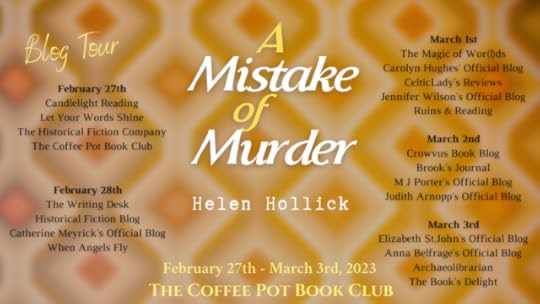
February 27, 2023
#TheRabbitHoleReadingChallenge Book Review: The Revenge of Bridget Cleary

Review
After the disaster which was my last read for this Challenge, I immediately realised that this book was perfect for laying that ghost to rest, which is topical because that is the theme of this entire story: Brigid Cleary is driven to avenge the brutal torture and murder of her mother, Bridget Cleary, who was a real-life victim of extreme domestic violence in 1895. A historical note at the beginning of the book shares the facts.
Mathilda Zeller creates the world clearly and the characters are mostly very well developed. You find yourself longing for Brigid to find the peace that she's so desperate for; being thankful - or perhaps wishing - for friends like Florence and Adelaide, and falling in love with Edmund and willing him not to let you down. Perhaps the only character who convinced me less than entirely was Mr Baxby. I felt like the whole story could have been rewritten from his point of view and he would have been a sorry character. How lovely to be back with characters who you felt like you could properly invest in though!
The pace of the book is very good. I usually read one chapter a night and, occasionally, could absolutely not wait to find out what happened next so would need to keep reading. You always feel as though there is something happening, rather than just any chapters which are in as fillers. I also loved the use of chapter headings such as, "In Which Our Heroine Confronts a Villain," as they really give an added sense of time to the story.
This should have been a five star book: I loved it and was gripped from beginning to end (did I mention, the ending is spectacular!)
The reason is isn't a five star review from me is because it was like an almost-finished product. The copy I received was in need of a final edit and proofread, and there were occasions throughout where this jerked me out of the world which was created by the story. Mostly, they were typos or formatting errors (the use of italics is essential in the story because they demonstrate when Brigid is hearing the voice of her dead mother in her head) but there were a couple of historical inaccuracies too. The Ireland described in the books is more in line with 19th century rather than 1910, which I believe is when the story is set. Irish history is a passion of mine, so I am certain that some of the things which didn't sit right with me wouldn't bother anyone else.
Mathilda Zeller is a talented author and, in The Revenge of Bridget Cleary, she has cleverly created a world which draws you quickly and deeply into an adventure with a great deal at stake. It just makes me annoyed that good authors can't always access affordable editorial support - and this is something which we're attempting to address with Crowvus Piapiac.
Blurb
Are you a witch, or are you a fairy, or are you the daughter of Bridget Cleary?
Exiled for a murder her father committed, Brigid Cleary has until midsummer to gather what she needs for readmission to her home in the fairy mound: a chest of stolen gold and a chest full of her father's blood. With nothing but her own wits and an ability to be mostly unseen, she takes a position as a scullery maid in a country manor house, where stealing gold is easy as dusting the candlesticks.
When discovery of her thieving becomes likely, she scarpers, embarking on a madcap season in London. With midsummer fast approaching, Brigid must recoup her stolen gold in any way she can, even if it means modeling for a lecherous pre Raphaelite artist, posing as a young debutante to spy on other debutantes, and forming a clandestine Pugilism Club for Young Ladies.
With gold filling her pockets and her father newly released from prison, the path back to the fairies should be clear. Or would be, were it not for her growing feelings for Edmund, the gentle young lord who hired her to spy on his sister; her burgeoning sense of loyalty and friendship to Adelaide, the sister upon whom she was meant to spy; and the unsettling question of whether she should--or even could--bloodily avenge her mother's death.
Inspired by the actual 1895 murder of Bridget Cleary by her husband Michael, the struggle for Irish Home Rule, and events surrounding the late pre Raphaelite artistic movement, The Revenge of Bridget Cleary has been heralded by author Joanna Ruth Meyer as "equal parts haunting, compelling, and throughtful."
Social Media
Twitter: @mathildazellerTikTok: mathildazellerauthorInstagram: mathildazellerauthorFacebook: @MathildaZellerBookbub: @MathildaZellerGoodreads: Mathilda Zeller
Author Website:
www.mathildazeller.wordpress.com
February 22, 2023
#HistFicThursdays - Hammer - Micheál Cladáin - Guest Post
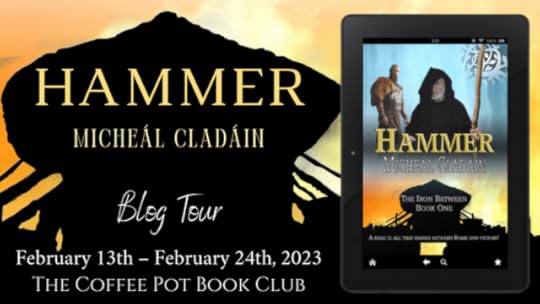
It's #HistFicThursdays, and I'm super-excited to be sharing a guest post from Micheál Cladáin, as part of his Coffee Pot Book Club tour. Find out about the care and attention to detail which Micheál incorporates into his writing, and how this inspired Hammer to come to life. But first, let's meet the book...Blurb
Genonn's tired and dreams of a remote roundhouse in the Cuala Mountains.
However, sudden rebellion in Roman Britain destroys that dream because the Elder Council task him with delivering Lorg Mór, the hammer of the Gods, to the tribes across the straits of Pwll Ceris. Despite being torn between a waning sense of duty and his desire to become a hermit, Genonn finally agrees to help.
When his daughter follows him into danger, it tests his resolve. He wants to do everything he can to see her back to Druid Island and her mother. This new test of will means he is once again conflicted between duty and desire. Ultimately, his sense of duty wins; is it the right decision? Has he done the right thing by relegating his daughter’s safety below his commitment to the clans?
Hammer is available on #KindleUnlimited via this universal link.
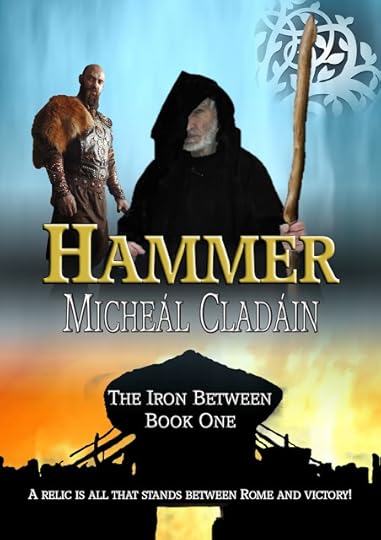
Guest Post
There are two driving forces behind my depth of research: many years as an editor in the SW industry instilled a need for accuracy, and I am a perfectionist.
When I read historical novels with inaccurate information, it turns me off. I am not one who usually DNFs a book, but I make an exception when there is an abundance of inaccuracies. This persnicketiness on my part goes beyond historical fiction. I was reading a grimdark fantasy recently where the author had two warriors training with a ship’s oar, one swinging and the other avoiding the swing. In my callow youth, I rowed coxless eights. An oar for a coxless eight is at least thirteen feet long, weighs about 4 kilos, and is incredibly unwieldy. Imagine how much worse a ship’s oar would be: at least thirty feet long and weighing only God knows how much. When, a few pages later, the author had one of the warriors twiddling a battle axe between their fingers, the book hit the DNF pile.
So, it would be hypocritical of me to release inaccurate books, right?
Leaning on my years in IT, several tenets determine the quality of technical documentation, such as clarity, brevity, accuracy, consistency, and navigability. Most of these principles can be adopted when writing a novel. The accuracy tenet is one, which to achieve requires in-depth research.
How did I apply the accuracy tenet to Hammer?
The backdrop for Hammer is the Boudiccan rebellion. The book has two POVs: the main character, Genonn the druid, and Agricola, the Roman general famed for the subjugation of Northern Britain and Wales.
Genonn I first introduced Genonn in an earlier novel (Milesian Daughter of War, August 2020). Genonn was a mythological druid I discovered when browsing a Celtic encyclopaedia. The entry contained little about him. That is, he was the son of a well-known druid, Cathbadh, and he was present at the Battle of Gairech (the culmination of the Cattle Raid of Cooley). Genonn had a small part in Daughter of War but took centre stage in my next novel, After Gairech, 2021.
Most of what we know about the druids comes from Roman writers. There is archaeological evidence of their existence, but a novelist needs more accurate information. My primary source has always been Julius Caesar’s Commentarii de Bello Gallico, transcribed as The Gallic Wars. I speak fluent Italian (described as vulgar Latin by the Ancient Romans), so I noticed some questionable translations early on in my research. As an aid to accuracy, I started reading the commentary in the original language.
Caesar provides plenty of juicy snippets for us authors. For instance, he describes druids as a strong political force, educators and priests. He wrote that the druids came from Britain and that much of their authority originated there. Tacitus later describes Mona (Anglesey) as the main druidic centre, with hundreds of archaeological sites supporting his belief. I used that information to create the druidic stronghold of Caer Leb and their influence over the Celtic clans of both Ireland and Britain.
I do not describe them as Celtic clans in my novels. Modern historians believe it to be a contemporary romantic interpretation of reality. This belief is despite Roman and Greek ancients describing them as a race. They also spoke the same proto-Celtic language, and there is evidence they originated in Northern Spain.
Caesar also claims the druids practised human sacrifices, which is backed-up by archaeological evidence.
Of course, there are other ways of researching the Ancient Celts. I took the following photo while visiting the Irish Heritage Centre in Wexford.
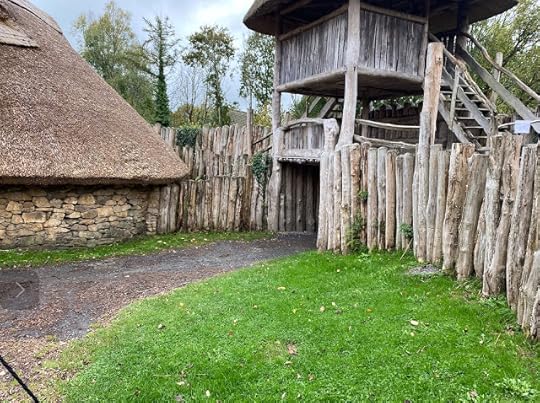
I used the photo to sketch the following picture of Genonn and the warrior Oengus holding the hammer. Part of my writing process includes building mood boards that hang behind my desk as a reminder of the setting.
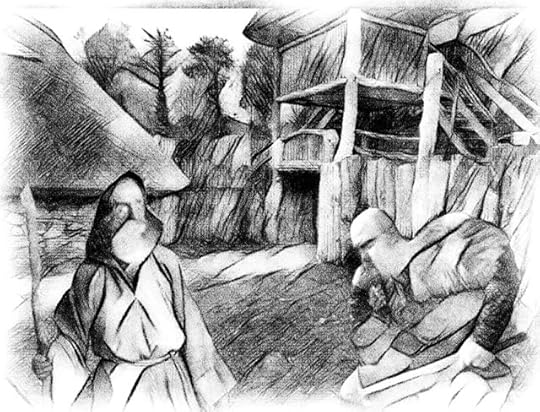
Agricola Tacitus and Cassius Dio are the two primary sources for what we know about the Boudiccan uprising and Agricola. I ignored Dio because he wrote over a hundred years after the fact and concentrated on the rebellion rather than Agricola. The uprising is a backdrop to my story, whereas Agricola is centre stage.
So, my primary sources were Agricola and Germania, The Life and Character of Julius Agricola and The Annals of Imperial Rome by Tacitus. I also read The Twelve Caesars by Suetonius (the Folio edition, so not in Latin) for some insights into Nero, the emperor at the time of the uprising.
Tacitus was the son-in-law of Agricola, so he had access to first-hand accounts of what happened during the uprising and direct interaction with the man himself.
During the first draft edit, my editor pulled me up on aspects of Agricola’s character, like his treating the natives with honour and nervousness. I got these traits from how Tacitus described his father-in-law. As such, I could push back on my editor’s request to turn him into a Roman bad guy, much like the caricatures in the Asterix comics.
Reading Tacitus also gave me the premise for the story, Stephen King’s “what if” moment. Tacitus writes that Nero recalled Suetonius (not the same as the author of The Twelve Caesars, but the governor of Britannia, Gaius Suetonius Paulinus, usually referred to as Suetonius). The recall was because Nero thought the governor caused the uprising. The emperor sent his freedman, Polyclitus, to investigate what happened and recalled the governor after the investigation.
While reading, I thought, “what if” Suetonius caused the uprising on purpose? The treatment of Boudica and her daughters and the financial persecution of the Iceni clan would indeed back up the theory. What reasons could he have? A failing career and the need to impress the Senate peaked up above the parapet, especially after the massacre of a cavalry turmae, comprising sons of the Equestrian Class.
So, there we are – a novel was born by my research.
Now, let's meet the author:

Micheál has been an author for many years. He studied Classics and developed a love of Greek and Roman culture through those studies. In particular, he loved their mythologies. As well as a classical education, bedtime stories consisted of tales read from a great tome of Greek Mythology, and Micheál was destined to become a storyteller from those times.
You can follow Micheál on these links:
Website - Facebook - Twitter - Instagram - Amazon Author Page - Goodreads
Keep up with the rest of the Hammer tour stops by clicking on the banner below:
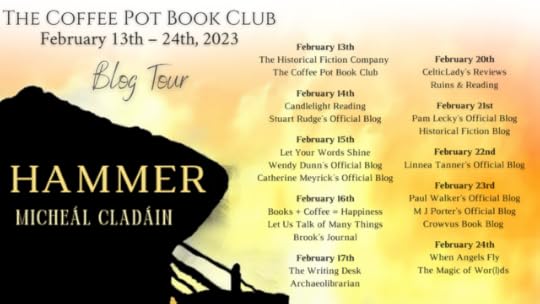
February 16, 2023
#HistFicThursdays - A Little Horror!
I know we’re nowhere near Halloween but, let’s be honest, every season is spooky season if you want it to be! So, I’m going to share some thoughts about one of my favourite genres to read and write: Gothic Horror.
I first discovered it as a genre when I was a teenager being taught at home. Every week, Dad would take me and my sister to the local library and we would pick a book or two to read. One week, I picked an abridged version of Dracula. I loved it so much that I immediately graduated onto the full version, before moving on to The Complete Works of Edgar Allan Poe.
There was something about these stories which completely immersed my imagination, and I think it was how setting is always an extra character in them. I read a piece a couple of weeks ago which was labelled as Gothic, but the setting wasn’t right. It didn’t jump out as one of the characters in the book which was twisting and turning as much as any of the humans (or not-quite-humans!)
Whitby is rightly proud of its connection with Dracula, but there is only a part of the book which is set there. Still, the ruins of the abbey always evoke that sense of the vampire, especially when it is pictured against the backdrop of the sea and sky at one of the liminal points of the day.
 What does it evoke in your imagination?
What does it evoke in your imagination? When I write Gothic Horror, the setting is always of the utmost importance. In fact, I usually have the setting before I have the main characters. In The Devil’s Servant (published by Quill & Crow in their anthology, Ravens & Roses: A Women’s Gothic Anthology), the main character immediately celebrates the lively setting of the Crystal Palace:
“There is something of writing about those days which evokes memory in each one of my senses: neither sight nor sound more permeating than the recollection of the scent of so many people thronging together to ogle and admire the vision which was the Great Exhibition, or the taste of food snatched when possible between meetings with one genius or another.”
However, as the story moves on, it takes the reader to Broughley Abbey, an altogether less ‘modern’ place. This is why many writers (including me!) still opt to set their Gothic Horror stories in the Victorian era, because it was a time when modern and ancient were meeting in the everyday. Just like Whitby Abbey at sunset, the 19th century was a liminal point in history for this reason.
By way of comparison to the Crystal Palace, here is a description of Broughley Abbey:
“I took in the magnificent view of the house and the haunting ruins of the abbey in the grounds, and I wondered that Giles spent so little time in such a place. Indeed, my imaginings led me to lose track of time, and I hurried back to the house as dusk was beginning to fall around me and the sky was becoming busy with a host of bats whisking their way over my head.”
Notice the darker undertones and the setting of the house at dusk as the narrator views it alone? It could not be any more different from the Great Exhibition. I’m not even sorry for engaging the age-old trope of bats representing darkness. There are some things which are just too Gothic to be omitted!
Broughley Abbey has its own stories, which appear in many of my books, although The Devil’s Servant is still the only one which is currently Out There. However, other places which I have enjoyed creating include Hedgwick Grange (The Lady Who Dances in the Ashes published by Sley House Publishing in Tales of Sley House 2022); Stretton Hall and Raighvan Park (The Grey Lady); and Priest’s Acre (Death at Priest’s Acre).
I love naming them: once they have a name, they become real, three-dimensional places which I can see and explore in my mind. I know where the ghosts are hiding, where the skeletons are buried, and I also know there are still secrets for me and my readers to discover.
I hope this little blog has given you some food for thought about the importance of setting in Gothic Horror. Feel free to send me any suggestions for reading, and of course I would encourage you to explore the two stories I have mentioned as being Out There!
February 9, 2023
#HistFicThursdays - Sir Henry Thompson (Spies and Rebels) - When you think your characters are too accomplished, remember these people existed!
For Christmas a couple of years ago, my sister set me this challenge. The story which rose from it is Part Five of my Family Saga, which is only a first draft at the moment with the working title: Spies and Rebels.
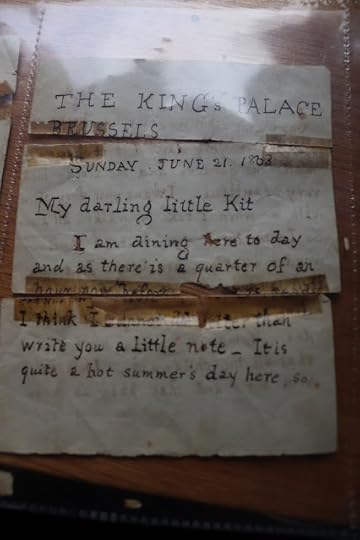
Unlike most of my books in this series which reference real people, Spies and Rebels actually include real people from history. One of these was Sir Henry Thompson, whose lovely letter to his daughter was included in the challenge box.
Henry Thompson is best known as a surgeon (no surprises then that I chose to have him as a significant character!), but his was also responsible for a number of advances in other social fields. As a surgeon, he was second-to-none in his field of care and - when Leopold, the first king of Belgium - was suffering from kidney stones, he was immediately sent for. This is where Spies and Rebels picks him up, as the victim of a pickpocket, but whose assailant is caught by none other than one of the titled spies. With the endearing letter as a testimony to the love he had of his children, it was easy to contrive the reason he had chased the thief.
"That, I regret to say, was my fault. I had chased that man for almost a mile after I found him picking my pocket. He would have been terribly disappointed to find there was only two francs in it, but I would not be without it."
"For the cost of two francs? I should not have run a mile for such a sum." Bella laughed, holding a little tighter to his arm. "But perhaps you were right. No man should be allowed to steal another man's belongings, however small."
"That is a far nobler reason perhaps than the one which in truth made me chase him. This purse contains a lock of hair from each of my children."
"I can imagine nothing more special, and no reason more noble. What a beautiful token..."
He had three children, Kate, Herbert, and Helen, to his wife who was the renowned pianist, Kate Loder. The letter in the box is addressed to Kit, which was the affectionate name he used for his eldest daughter, Kate. Henry was responsible for persuading his wife to give up her performing career, a move which seems out of keeping for such a forward-thinking individual, but it is possible that he did this as a result of her paralysis which occurred at about the same time.
But Henry Thompson did far more than surgery. He was one of the strongest advocates of cremation, being a founding member of the board responsible for this social move towards the establishing of crematoriums. He was something of a philosopher, and persevered in his hunt for an understanding of God, which he discussed in his final work, an essay called The Unknown God, in which he stated that there was a god, but he was a remote and disinterested deity - effectively something which set the ball in motion and just watched to see what happened. He also spoke out in favour of reducing the amount of meat people consumed, providing medical evidence to support this and paving the way for vegetarianism as a viable alternative to eating meat.
Another string to his bow was as an author, writing under the name Pen Oliver, and I had a great time incorporating what I supposed could be the inspiration for his 1886 book All But: a Chronicle of Laxenford Life into Spies and Rebels! He was also a pioneer in the newly developed (no pun intended!) field of photography, and something of an artist, too. In short, it seems that there was nothing he was unwilling to try his hand at!
But he claimed his knighthood and baronetcy for yet another thing! This was the promotion and gifting of telescopes to the National Observatory, proving that it didn't matter how creative and skilled you were, if you wanted a title you just had to throw money in the right directions!
If you have never encountered Sir Henry Thompson, you should look him up. He possessed the questioning mind which makes for incredible characters, and a deep care and affection for humanity and their wellbeing... What more could you ask for in a character?!
Crowvus Book Blog
- Virginia Crow's profile
- 128 followers


